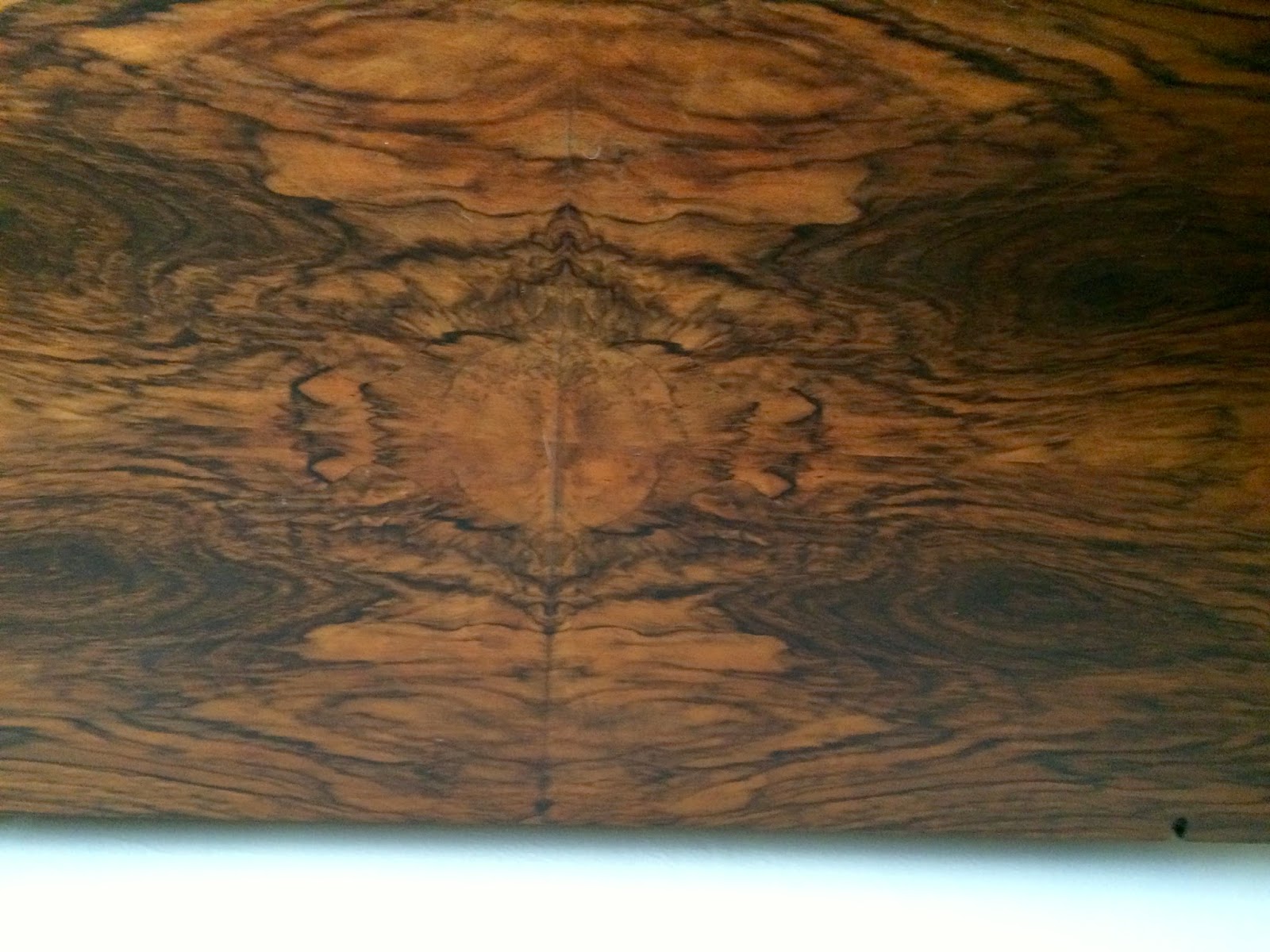Step 1. Find a Dresser
I looked at some of our favorite online shops for new furniture, and was blown away by the prices and low quality. I really refuse to pay hundreds of dollars for furniture made with fiberboard, no matter how nice it looks. So then we started looking at second-hand shops, which were still pricey and very hit-or-miss.
Then I finally turned to Craigslist. I searched every day, several times a day for almost two months. I found lots of really cheap crap that was just awful. I found a couple solid pieces that were nice, but needed a lot of work. I found a couple that were great, but by the time I expressed interest- they were already taken. Then I found the perfect one- I contacted the seller immediately, offered to come get it immediately, and went to pick it up that night.
For only $100, we got this amazing dresser with a curvy front and claw feet. The frame of the dresser is solid wood, and the top, sides and front are covered with a wood veneer with a cool burl thing going on.
the new dresser arrives in the dining room
Step 2. Remove the Finish
Of course, it wasn't perfect - so as soon as I saw it, I knew I wanted to refinish it. There were a number of scratches on top, plus the color was a bit too orange for me. So, on a nice warm day, we moved it outside and got to work sanding it down. We opted to sand by hand to make sure we didn't accidentally gouge the veneer. We started with a coarse grit sanding block.
The frame of the dresser quickly sanded down to the bare wood, but the veneer parts wouldn't give it up. So we broke out some stripper, and put a light coat on all the veneer pieces. We let it sit for a very small amount of time (like 10 minutes) to avoid it eating through the veneer, and then scraped it off. Then we went back and resanded those pieces again with a medium grit sanding block, just to make sure all of the finish was removed.
The frame of the dresser quickly sanded down to the bare wood, but the veneer parts wouldn't give it up. So we broke out some stripper, and put a light coat on all the veneer pieces. We let it sit for a very small amount of time (like 10 minutes) to avoid it eating through the veneer, and then scraped it off. Then we went back and resanded those pieces again with a medium grit sanding block, just to make sure all of the finish was removed.
dresser covered with stripper
all stripped and sanded and ready for stain
Step 3. Prep & Stain
Once it was all sanded down, we moved it into the garage, and I cleaned it up and applied wood conditioner. Conditioner helps prep the wood so that the stain soaks in evenly. It's super easy to apply, so I just grabbed a foam brush and quickly added a coat. Then, I took another foam brush and our dark walnut stain, and carefully added a thin coat of stain to the whole thing, in the direction of the wood grain. I came back with a rag to wipe off the excess.
Step 4. Finish
I let it hang out overnight to dry, and then came back with a new foam brush and the polyurethane to finish. I added a thin coat in the direction of the grain, let it soak in and dry, and then added another. After 3 coats - I called it a day. This is oil-based poly, so it is stronger than water-based but has more fumes - so it was important to do this process outside in the garage. Then we moved it into the new kid's room.
Step 5. Accessorize
Once the wood was all finished, I attached some new knobs. We picked up these guys from Anthropologie, which has lots of fun hardware options. Lastly, we bought a changing pad and several covers to make this a functional changing table. We attached the changing pad to the dresser so it can't fall off with a screw in the back.
Now that we have a functional changing table and dresser for clothes and stuff, we officially have all of the furniture. The room is actually feeling a little cramped - hopefully we didn't overdo it! We just need the last finishing touches, and this room's all done.
screwing down the safety strap
closeup of the knobs
claw feet with toe nails
a view of the top
all done and ready to change some diapers!
view down the hall - check out those lovely floors and lack of thresholds
view from the side
Now that we have a functional changing table and dresser for clothes and stuff, we officially have all of the furniture. The room is actually feeling a little cramped - hopefully we didn't overdo it! We just need the last finishing touches, and this room's all done.

















































